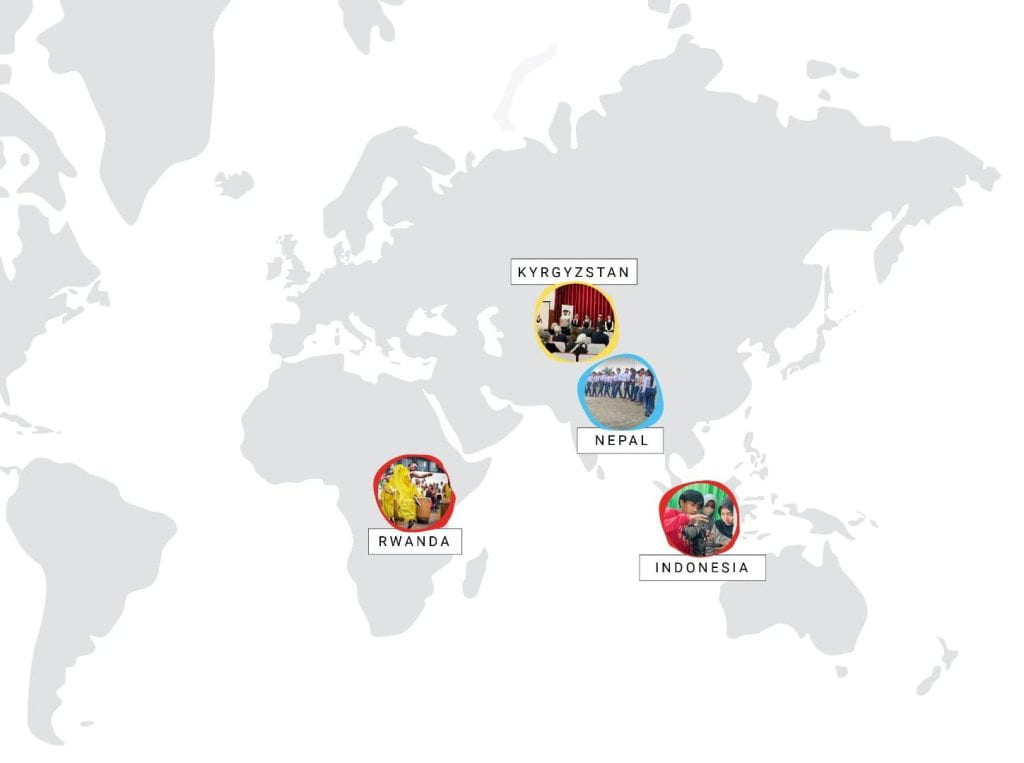A global network
MAP works across Rwanda, Nepal, Indonesia and Kyrgyzstan.
Read our country pages to read more about each country, who we work with, what we do and relevant resources for local practitioners and policy makers.

MAP works across Rwanda, Nepal, Indonesia and Kyrgyzstan.
Read our country pages to read more about each country, who we work with, what we do and relevant resources for local practitioners and policy makers.
